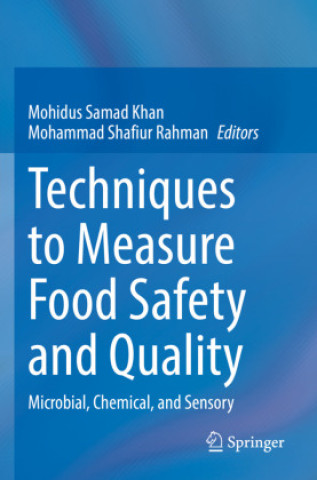
Kód: 41442986
Techniques to Measure Food Safety and Quality
Autor Mohidus Samad Khan, Mohammad Shafiur Rahman
This book addresses the basic understanding of food contaminants and their sources, followed by the techniques to measure food safety and quality. It is divided into four parts: Part A - sources of contaminants in foods, their as ... celý popis
- Jazyk:
 Angličtina
Angličtina - Vazba: Brožovaná
- Počet stran: 477
Nakladatelství: Springer, Berlin, 2022
- Více informací o knize

7468 Kč

Skladem u dodavatele v malém množství
Odesíláme za 12-15 dnů
Potřebujete více kusů?Máte-li zájem o více kusů, prověřte, prosím, nejprve dostupnost titulu na naši zákaznické podpoře.
Přidat mezi přání
Mohlo by se vám také líbit
-
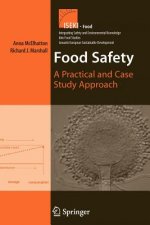
Food Safety
6578 Kč -
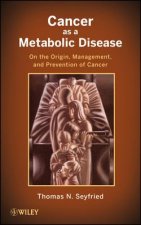
Cancer as a Metabolic Disease - On the Origin, Management, and Prevention of Cancer
3828 Kč -
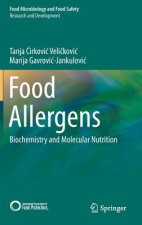
Food Allergens
3313 Kč -

Fraud Analytics Using Descriptive, Predictive, and Social Network Techniques - A Guide to Data Science for Fraud Detection
1200 Kč -
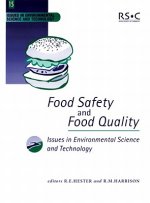
Food Safety and Food Quality
1429 Kč -
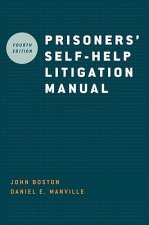
Prisoners' Self Help Litigation Manual
2183 Kč -

MILLAY
429 Kč
Dárkový poukaz: Radost zaručena
- Darujte poukaz v libovolné hodnotě a my se postaráme o zbytek.
- Poukaz se vztahuje na celou naši nabídku.
- Elektronický poukaz vytisknete z e-mailu a můžete ihned darovat.
- Platnost poukazu je 12 měsíců od data vystavení.
Více informací o knize Techniques to Measure Food Safety and Quality
Nákupem získáte 747 bodů
 Anotace knihy
Anotace knihy
This book addresses the basic understanding of food contaminants and their sources, followed by the techniques to measure food safety and quality. It is divided into four parts: Part A - sources of contaminants in foods, their associated health risks, and integrated management and alternative options to minimize contaminants; Part B - Technological assessment of conventional methods and selected advanced methods for the detection, identification and enumeration of microbial contaminates; Part C - Technological assessment of different chemical measurements techniques; and Part D - Technological assessment of different instrumental techniques to assess sensory properties of foods. Food safety is a growing concern due to the increase in food-borne illnesses caused by food adulteration, excessive use of pesticides, use of chemical preservatives and artificial fruit ripening agents, microbial contaminations, and improper food handling. Chemical contaminants in food could be transferred from environmental or agrochemical sources, personal care products, and other by-products of water disinfects. In addition, microbial food safety can be threatened due to the presence of many pathogens, such as Salmonella, Escherichia coli, Clostridium botulinum, Staphylococcus aureus, and Listeria monocytogenes in foods. Globally, strict regulations are imposed to limit the potential contaminants in foods. Development of accurate, rapid, and inexpensive approaches to test food contamination and adulteration would be highly valued to ensure global food safety. There are existing processes to ensure safety of food products from chemical and microbial contaminants. Apart from the existing measurement technologies, varieties of new techniques are also being emerged and these could be potential to ensure food safety and quality. In addition to chemical and microbial properties, sensory properties such as texture, mouth feel, flavor, and taste, are among the most important attributes of food products to ensure their acceptability by consumers. Two approaches are available to evaluate sensory properties of food products, namely subjective and objective analyses. The responses are perceived by all five senses: smell, taste, sight, touch, and hearing. The approach used in sensory evaluation varies depending on the types of foods and the ultimate goal of the testing. Sensory attributes are the most important quality parameters after ensuring the safety of foods.
 Parametry knihy
Parametry knihy
Zařazení knihy Knihy v angličtině Mathematics & science Biology, life sciences Microbiology (non-medical)
7468 Kč
- Plný název: Techniques to Measure Food Safety and Quality
- Podnázev: Microbial, Chemical, and Sensory
- Autor: Mohidus Samad Khan, Mohammad Shafiur Rahman
- Jazyk:
 Angličtina
Angličtina - Vazba: Brožovaná
- Počet stran: 477
- EAN: 9783030686383
- ID: 41442986
- Nakladatelství: Springer, Berlin
- Hmotnost: 739 g
- Rozměry: 235 × 155 × 27 mm
- Rok vydání: 2022
Oblíbené z jiného soudku
-
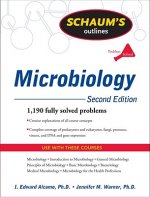
Schaum's Outline of Microbiology, Second Edition
672 Kč -
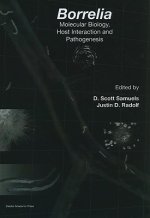
Borrelia: Molecular Biology, Host Interaction and Pathogenesis
6829 Kč -

Plant Anatomy
1926 Kč -
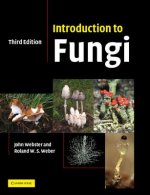
Introduction to Fungi
3011 Kč -
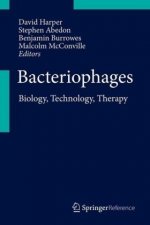
Bacteriophages
17890 Kč -
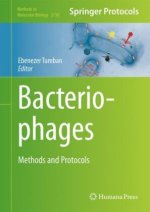
Bacteriophages
5864 Kč -
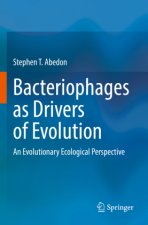
Bacteriophages as Drivers of Evolution
4189 Kč -
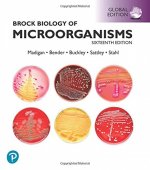
Brock Biology of Microorganisms, Global Edition
2109 Kč -

Parasite Rex (with a New Epilogue): Inside the Bizarre World of Nature'sMost Dangerous Creatures
277 Kč -
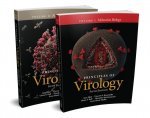
Principles of Virology, Fifth Edition Multi-Volume
4603 Kč -
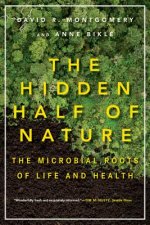
Hidden Half of Nature
385 Kč -
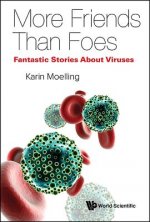
Viruses: More Friends Than Foes
840 Kč -
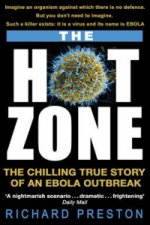
Hot Zone
303 Kč -
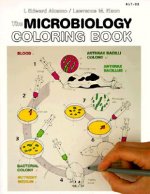
Microbiology Coloring Book
1073 Kč -
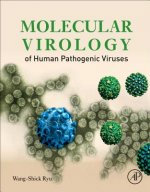
Molecular Virology of Human Pathogenic Viruses
2415 Kč -
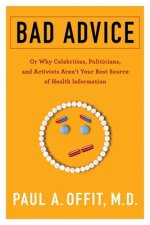
Bad Advice
592 Kč -

Principles of Virology - Molecular Biology, Fifth Edition Volume 1
2956 Kč -
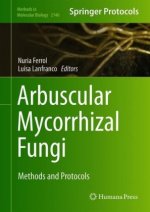
Arbuscular Mycorrhizal Fungi
5864 Kč -
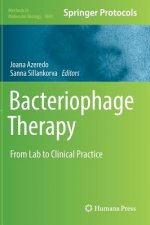
Bacteriophage Therapy
6578 Kč -
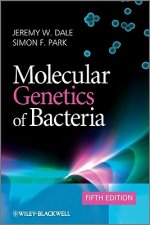
Molecular Genetics of Bacteria 5e
3328 Kč -
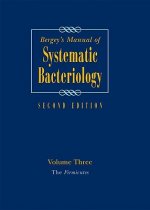
Bergey's Manual of Systematic Bacteriology
15342 Kč -

Sacred Mushroom of Visions
427 Kč -
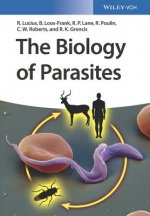
Biology of Parasites
2476 Kč -
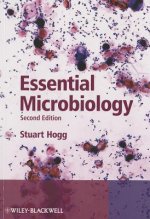
Essential Microbiology 2e
2958 Kč -
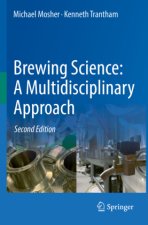
Brewing Science: A Multidisciplinary Approach
2422 Kč -

The Perfect Predator
383 Kč -
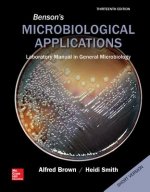
Benson's Microbiological Applications, Laboratory Manual in General Microbiology, Short Version
3946 Kč -
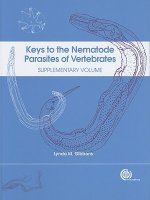
Keys to the Nematode Parasites of Vertebrates
7231 Kč -
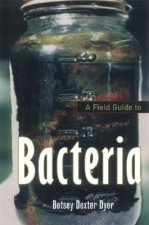
Field Guide to Bacteria
721 Kč -
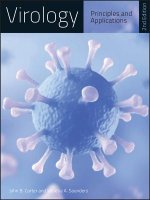
Virology - Principles and Applications 2e
1993 Kč -
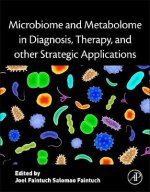
Microbiome and Metabolome in Diagnosis, Therapy, and other Strategic Applications
2792 Kč -
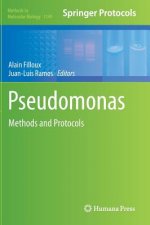
Pseudomonas Methods and Protocols
8953 Kč -

Thinking Like a Phage
872 Kč -

The Perfect Predator
1239 Kč -
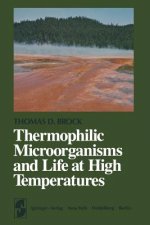
Thermophilic Microorganisms and Life at High Temperatures
2720 Kč -
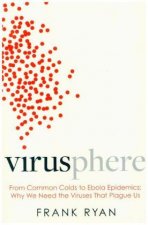
Virusphere
462 Kč -
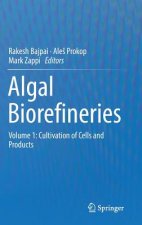
Algal Biorefineries
5094 Kč -
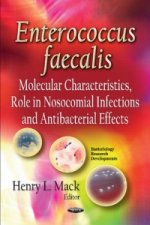
Enterococcus faecalis
7439 Kč -
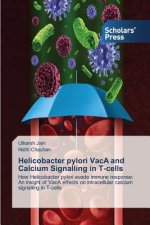
Helicobacter pylori VacA and Calcium Signalling in T-cells
1795 Kč -

Campylobacter jejuni
4798 Kč -
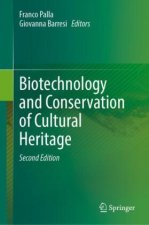
Biotechnology and Conservation of Cultural Heritage
5094 Kč -

Heretic's Notebook
859 Kč -
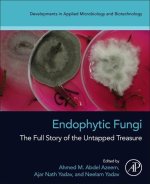
Endophytic Fungi
3958 Kč -

Role of Animals in Emerging Viral Diseases
2000 Kč -
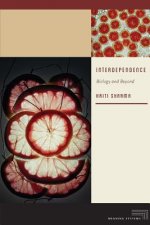
Interdependence
848 Kč -
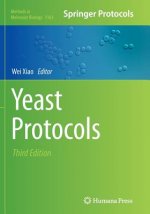
Yeast Protocols
3611 Kč -
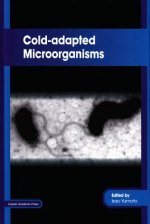
Cold-Adapted Microorganisms
6828 Kč -
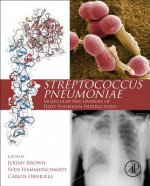
Streptococcus Pneumoniae
3544 Kč -
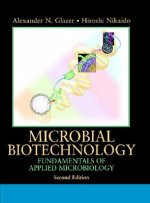
Microbial Biotechnology
1216 Kč
Osobní odběr Praha, Brno a 12903 dalších
Copyright ©2008-24 nejlevnejsi-knihy.cz Všechna práva vyhrazenaSoukromíCookies


 Vrácení do měsíce
Vrácení do měsíce 571 999 099 (8-15.30h)
571 999 099 (8-15.30h)